SPACE RACE 2.0
Why astronomers want to put a telescope on the dark side of the moon
Andrew Paul
Wed, September 27, 2023
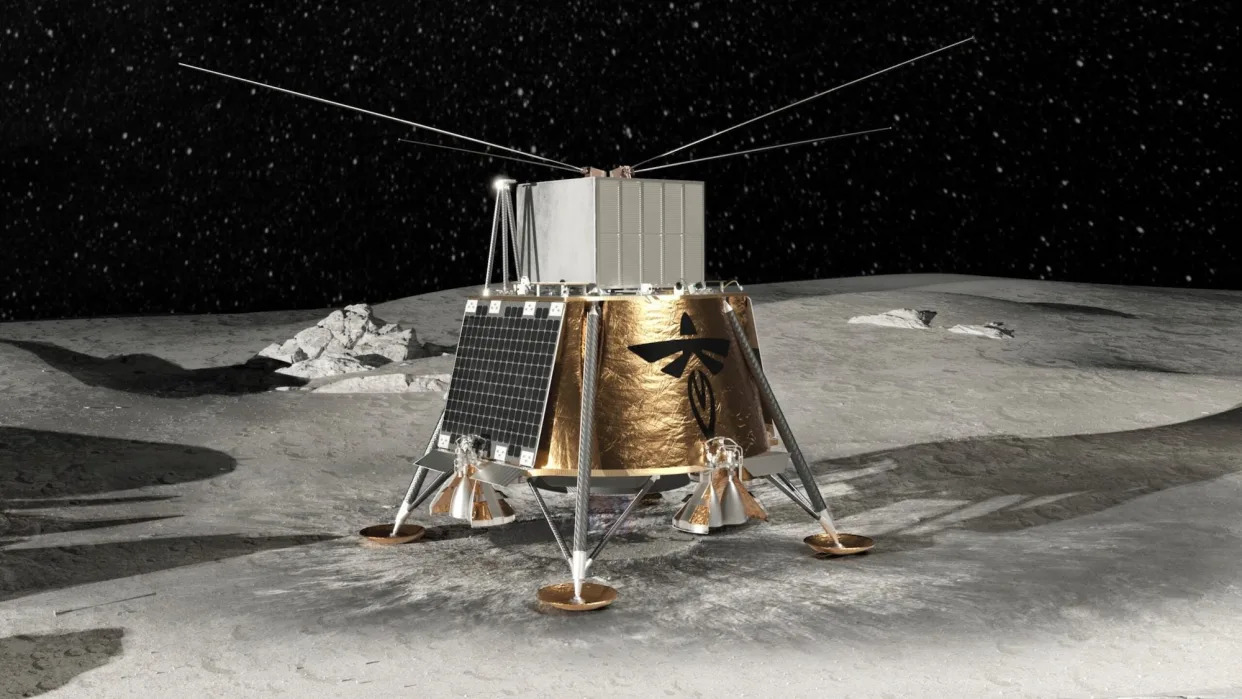
LuSEE-Night will arrive aboard Firefly Aerospace's Blue Ghost lunar lander.
The dark side of the moon, despite its name, is a perfect vantage point for observing the universe. On Earth, radio signals from the furthest depths of space are obscured by the atmosphere, alongside humanity’s own electronic chatter, but the lunar far side has none of these issues. Because of this, establishing an observation point there could allow for unimpeded views of some of cosmic history’s earliest moments—particularly a 400 million year stretch known as the universe’s Dark Ages when early plasma cooled enough to begin forming the protons and electrons that eventually made hydrogen.
After years of development and testing, just such an observation station could come online as soon as 2026, in part thanks to researchers at the Lawrence Berkeley National Laboratory in California.
The team is currently working alongside NASA, the US Department of Energy, and the University of Minnesota on a pathfinder project called the Lunar Surface Electromagnetics Experiment-Night (LuSEE-Night). The radio telescope is on track to launch atop Blue Ghost, private space company Firefly Aerospace’s lunar lander, as part of the company’s second moon excursion. Once in position, Blue Ghost will detach from Firefly’s Elytra space vehicle, then travel down to the furthest site ever reached on the moon’s dark side.
“If you’re on the far side of the moon, you have a pristine, radio-quiet environment from which you can try to detect this signal from the Dark Ages,” Kaja Rotermund, a postdoctoral researcher at Berkeley Lab, said in a September 26 project update. “LuSEE-Night is a mission showing whether we can make these kinds of observations from a location that we’ve never been in, and also for a frequency range that we’ve never been able to observe.”
More specifically, LuSEE-Night will be equipped with specialized antennae designed by the Berkeley Lab team to listen between 0.5 and 50 megahertz. To accomplish this, both the antennae and its Blue Ghost transport will need to be able to withstand the extreme temperatures experienced on the moon’s far side, which can span between -280 and 250 degrees Fahrenheit. Because of its shielded lunar location, however, LuSEE-Night will also need to beam its findings up to an orbiting satellite that will then transfer the information back to Earth.
“The engineering to land a scientific instrument on the far side of the moon alone is a huge accomplishment,” explained Berkeley Lab’s antenna project lead, Aritoki Suzuki, in the recent update. “If we can demonstrate that this is possible—that we can get there, deploy, and survive the night—that can open up the field for the community and future experiments.”
If successful, LuSEE-Night could provide data from the little known Dark Ages, which breaks up other observable eras such as some of the universe's earliest moments, as well as more recent moments after stars began to form.
According to Berkeley Lab, the team recently completed a successful technical review, and is currently working on constructing the flight model meant for the moon. Once landed, LuSEE-Night will peer out into the Dark Age vastness for about 18 months beginning in 2026.
Radio telescope will launch to moon's far side in 2025 to hunt for the cosmic Dark Ages
Wed, September 27, 2023

LuSEE-Night will arrive aboard Firefly Aerospace's Blue Ghost lunar lander.
The dark side of the moon, despite its name, is a perfect vantage point for observing the universe. On Earth, radio signals from the furthest depths of space are obscured by the atmosphere, alongside humanity’s own electronic chatter, but the lunar far side has none of these issues. Because of this, establishing an observation point there could allow for unimpeded views of some of cosmic history’s earliest moments—particularly a 400 million year stretch known as the universe’s Dark Ages when early plasma cooled enough to begin forming the protons and electrons that eventually made hydrogen.
After years of development and testing, just such an observation station could come online as soon as 2026, in part thanks to researchers at the Lawrence Berkeley National Laboratory in California.
The team is currently working alongside NASA, the US Department of Energy, and the University of Minnesota on a pathfinder project called the Lunar Surface Electromagnetics Experiment-Night (LuSEE-Night). The radio telescope is on track to launch atop Blue Ghost, private space company Firefly Aerospace’s lunar lander, as part of the company’s second moon excursion. Once in position, Blue Ghost will detach from Firefly’s Elytra space vehicle, then travel down to the furthest site ever reached on the moon’s dark side.
“If you’re on the far side of the moon, you have a pristine, radio-quiet environment from which you can try to detect this signal from the Dark Ages,” Kaja Rotermund, a postdoctoral researcher at Berkeley Lab, said in a September 26 project update. “LuSEE-Night is a mission showing whether we can make these kinds of observations from a location that we’ve never been in, and also for a frequency range that we’ve never been able to observe.”
More specifically, LuSEE-Night will be equipped with specialized antennae designed by the Berkeley Lab team to listen between 0.5 and 50 megahertz. To accomplish this, both the antennae and its Blue Ghost transport will need to be able to withstand the extreme temperatures experienced on the moon’s far side, which can span between -280 and 250 degrees Fahrenheit. Because of its shielded lunar location, however, LuSEE-Night will also need to beam its findings up to an orbiting satellite that will then transfer the information back to Earth.
“The engineering to land a scientific instrument on the far side of the moon alone is a huge accomplishment,” explained Berkeley Lab’s antenna project lead, Aritoki Suzuki, in the recent update. “If we can demonstrate that this is possible—that we can get there, deploy, and survive the night—that can open up the field for the community and future experiments.”
If successful, LuSEE-Night could provide data from the little known Dark Ages, which breaks up other observable eras such as some of the universe's earliest moments, as well as more recent moments after stars began to form.
According to Berkeley Lab, the team recently completed a successful technical review, and is currently working on constructing the flight model meant for the moon. Once landed, LuSEE-Night will peer out into the Dark Age vastness for about 18 months beginning in 2026.
Radio telescope will launch to moon's far side in 2025 to hunt for the cosmic Dark Ages
Keith Cooper
Thu, September 28, 2023
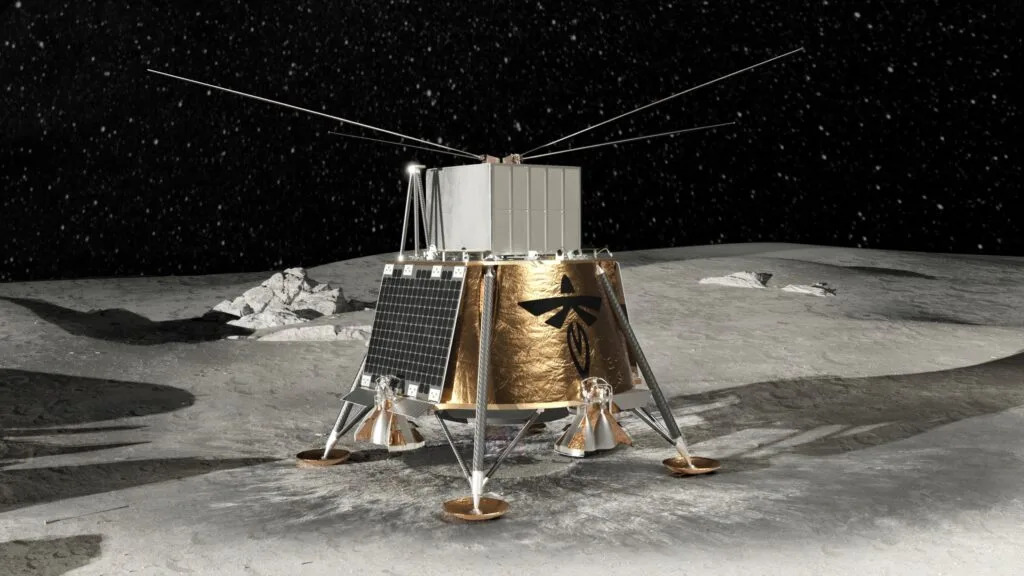
Radio telescope will launch to moon's far side in 2025 to hunt for the cosmic Dark Ages
A small mission to test technology to detect radio waves from the cosmic Dark Ages over 13.4 billion years ago will blast off for the far side of the moon in 2025.
The Lunar Surface Electromagnetic Experiment-Night mission, or LuSEE-Night for short, is a small radio telescope being funded by NASA and the U.S. Department of Energy with involvement from scientists at the Lawrence Berkeley National Laboratory, the Brookhaven National Laboratory, the University of California, Berkeley and the University of Minnesota. LuSEE-Night will blast off as part of NASA's Commercial Lunar Payloads program.
The Dark Ages are the evocative name given to the period of time after the Big Bang, when the first stars and galaxies were only just beginning to form and ionize the neutral hydrogen gas that filled the universe. Little is known about this period, despite efforts by the James Webb Space Telescope to begin probing into this era.
Related: The moon: Everything you need to know about Earth's companion
The neutral hydrogen present during the Dark Ages was able to absorb some of the radiation of the cosmic microwave background, creating a dip in the intensity of radio waves from that era at frequencies between 0.5 and 50 megaHertz.
"We're looking for this very tiny dip that is potentially the Dark Ages signal," said Kaja Rotermund of the Lawrence Berkeley National Laboratory in a statement.
Earth's atmosphere, in conjunction with terrestrial radio interference, obscures this faint signal. The solution is to go to the far side of the moon, where there is no atmosphere and Earth and all its radio noise is not visible.
"If you're on the far side of the moon, you have a pristine, radio-quiet environment from which you can try to detect this signal from the Dark Ages," said Rotermund. "LuSEE-Night is a mission showing whether we can make these kinds of observations from a location that we've never been in, and also for a frequency range that we've never been able to observe."
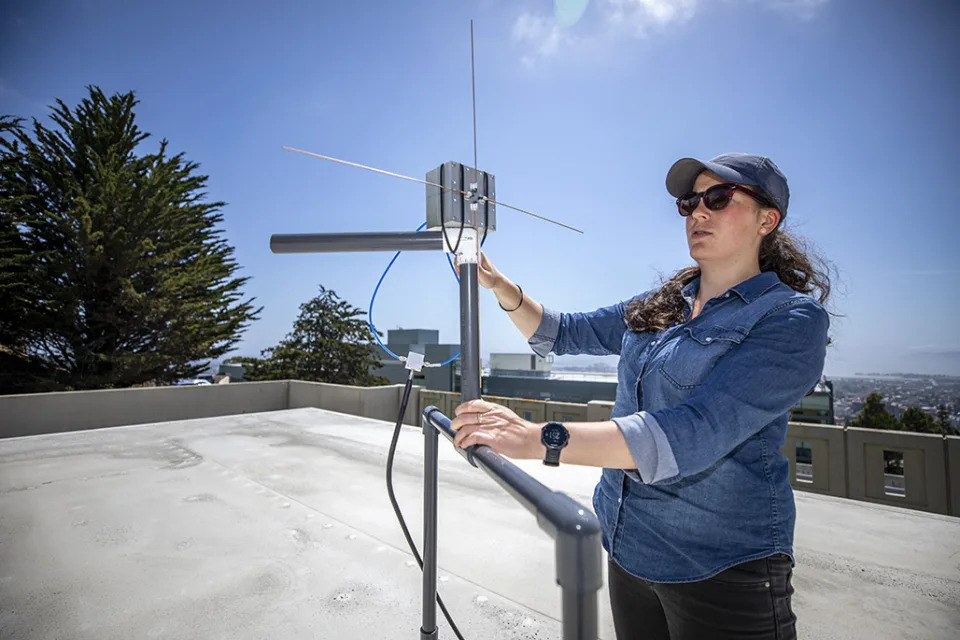
LuSEE-Night will be joined on the moon by LuSEE-Lite, which will blast off for Schrödinger Basin, which is located on the far side near the moon's south pole, in 2024. LuSEE-Lite will operate in daylight, but LuSEE-Night will test technologies such as antennas and batteries to see if they can function efficiently in the freezing-cold conditions of lunar night, where the temperature can reach as low as minus 280 degrees Fahrenheit (minus 170 degrees Celsius). While the lunar far side experiences daytime as well as night-time, night lasts for two weeks, so any long-duration mission to the moon has to deal with that. Because LuSEE-Night will not be able to see Earth from the lunar far side, a relay satellite will have to communicate with Earth on its behalf.
Rotermund and her colleagues at Berkeley Lab are building two pairs of antennas that will fly on LuSEE-Night to try and detect the hydrogen absorption in the radio waves from the cosmic Dark Ages. The antennas are 20 feet (6 meters) long from tip to tip, and are spring-loaded and designed to uncoil upon landing.
"The engineering to land a scientific instrument on the far side of the moon alone is a huge accomplishment," said Aritoki Suzuki of Berkeley Labs. "If we can demonstrate that this is possible — that we can get there, deploy and survive the night — that can open up the field for the community and future experiments."
The first-ever successful landing on the lunar far side was in 2019, when China's Chang'e 4 mission touched down and deployed a small rover named Yutu-2.
LuSEE-Night could be seen as a precursor for a much larger and more ambitious radio telescope. Scientists have long proposed the building of a radio telescope on the far side of the moon that could probe the entirety of the radio spectrum without radio frequency interference from Earth, and therefore spot frequencies undetectable from our planet. Such a telescope would pose intriguing engineering challenges, such as how to build a large telescope in the moon's low gravity and cold temperatures.
A larger, more sensitive telescope may well be needed, for LuSEE-Night is not necessarily expected to be able to detect the Dark Ages. First and foremost it is a technology demonstrator, and any scientific results that it can achieve will be a bonus.
LuSEE-Night will be flown to the moon in partnership with Firefly Aerospace, which is building the "Blue Ghost" lander that will carry it. The plan is for LuSEE-Night to function on the moon for 18 months, recharging its batteries using solar power during the two-week long lunar days.
Chinese Scientists Ponder Moon Base Inside Ancient Lunar Lava Tube
Victor Tangermann
Thu, September 28, 2023
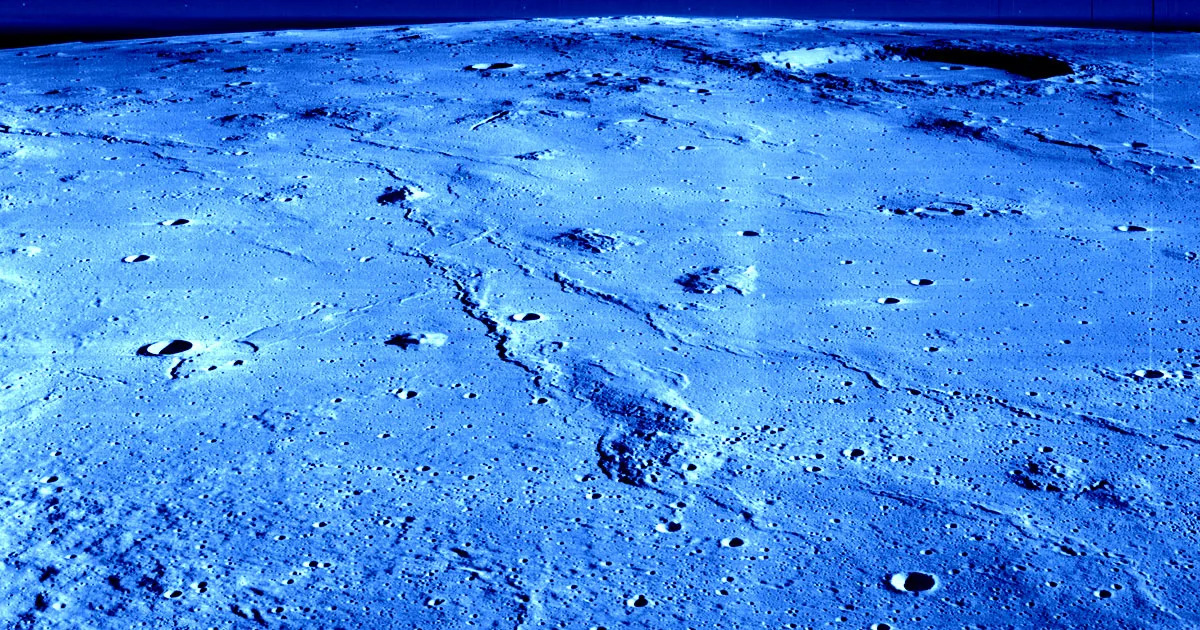
Dig Dug
Chinese researchers are investigating the feasibility of having astronauts construct a base inside lava tubes under the lunar surface, an exciting prospect that could one day allow astronauts to establish a more permanent presence on the Moon.
Scientists have long suspected that our natural satellite is riddled with intricate systems of hollow, tube-like tunnels, left behind by ancient lava currents.
Our evidence so far is still relatively limited, with NASA's Lunar Reconnaissance Orbiter picturing hundreds of "skylights," per Universe Today, which scientists suspect were left behind after tunnel ceilings collapsed. But we have yet to get a first-hand look at these structures — if they exist as we've been picturing them at all, that is.
But if they are there, international space agencies are intrigued. Once inside a lava tube, astronauts could be sheltered not only from showers of micrometeorites but also from the dangerous levels of radiation the atmosphere-less space rock is blasted with.
Lunar Skylight
During a recent conference, Zhang Chongfeng from the Shanghai Academy of Spaceflight Technology said that future spacecraft and lunar landers could explore these lava tubes, according to state-run news outlet Xinhua.
Zhang and his colleagues have been studying lava caves in China to get a better understanding of the structures. To explore the vertical "skylight" entrances to these caves, the researchers suggest that space travelers may have to fly inside with a spacecraft.
China isn't alone in investigating the idea. NASA scientists have also been exploring ways to do just that for well over a decade, with various teams coming up with a number of solutions over the years, from "hopping pit-bots" to rolling spacecraft.
To hone in on a destination, Chinese researchers have picked lava tubes at the Moon's Mare Tranquillitatis and Mare Fecunditatis as their primary targets, according to Xinhua.
They suggest we could probe the surrounding areas and openings with walking or wheeled robots capable of adapting to a range of different environments. Zhang suggests auxiliary spacecraft could fly into these caves to map the walls and ceilings with radars.
A lunar base could be composed of multiple residential and scientific research cabins inside the cave with a communication and energy hub at the entrance, Zhang proposed.
But getting to the point where Chinese taikonauts could set up shop inside one of these lava tubes could take many years.
At the same time, the country has made astonishing progress in terms of exploring the lunar surface — China has successfully sent several rovers to the lunar surface over the last decade — and its first crewed landing is tentatively scheduled for 2030.
More on China and the Moon: China Announces Plans to Build Moon Base Using Lunar Soil
Chinese researchers look to build underground moon base for future manned mission
Bryan Ke
Wed, September 27, 2023 at 12:11 PM MDT·2 min read
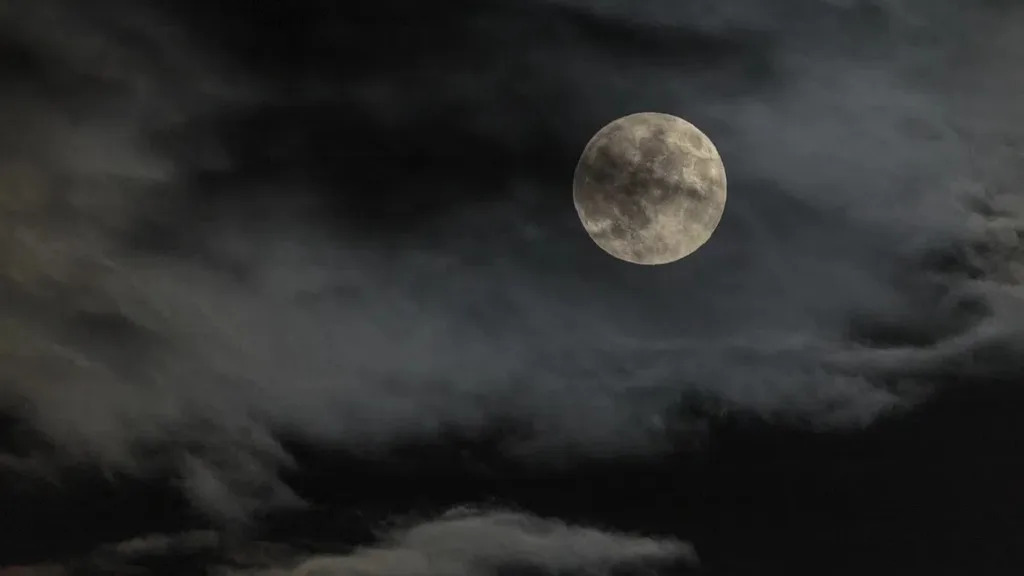
[Source]
A team of Chinese researchers is studying the possibility of building an underground lunar base through the moon’s lava tubes that would be used for China’s future manned moon missions.
Revealing the plan: Shanghai Academy of Spaceflight Technology’s Zhang Chongfeng, who was also credited as the vice chief designer of the Shenzhou series spacecraft and moon landers, unveiled the study at the 10th CSA-IAA Conference on Advanced Space Technology held in Shanghai from Sept. 13 to 16.
Their study: Zhang said he and his team and other planetary geology experts from China studied lava tubes found in the country, which they believed to have similarities to the ones on the moon, to understand the underground structures better for the mission.
Different kinds of lava tubes: During the presentation, Zhang reportedly noted that lava tubes have two types of entrances, one with a vertical opening and another with a sloping entrance.
He explained that the vertical type of lava tube entrance would require a lifting mechanism for humans to get in and outside, while the sloping entrance provides a more suitable path without the need for machinery. Zhang noted that they have now chosen the Mare Tranquillitatis and Mare Fecunditatis lava tubes as the primary exploration targets.
Establishing a lunar base: The Chinese scientist also proposed building a long-term underground lunar research base, which could be accomplished by setting up a support center for communication and energy by the entrance of the tubes.
The team would also have to landscape the terrain in the tubes to prepare for multiple cabins with different functionalities, which would be placed inside the tunnels, such as residential and research.
Future mission: The China Manned Space Agency (CMSA) announced its plans to conduct manned missions on the lunar surface before 2030 in May.
The CMSA is also asking the public to help them name the moon lander and the new generation crew spacecraft for the mission. The name, which can have a maximum of four Chinese characters, must highlight China’s intelligent manufacturing. The competition ends on Sept. 30.
Victor Tangermann
Thu, September 28, 2023

Dig Dug
Chinese researchers are investigating the feasibility of having astronauts construct a base inside lava tubes under the lunar surface, an exciting prospect that could one day allow astronauts to establish a more permanent presence on the Moon.
Scientists have long suspected that our natural satellite is riddled with intricate systems of hollow, tube-like tunnels, left behind by ancient lava currents.
Our evidence so far is still relatively limited, with NASA's Lunar Reconnaissance Orbiter picturing hundreds of "skylights," per Universe Today, which scientists suspect were left behind after tunnel ceilings collapsed. But we have yet to get a first-hand look at these structures — if they exist as we've been picturing them at all, that is.
But if they are there, international space agencies are intrigued. Once inside a lava tube, astronauts could be sheltered not only from showers of micrometeorites but also from the dangerous levels of radiation the atmosphere-less space rock is blasted with.
Lunar Skylight
During a recent conference, Zhang Chongfeng from the Shanghai Academy of Spaceflight Technology said that future spacecraft and lunar landers could explore these lava tubes, according to state-run news outlet Xinhua.
Zhang and his colleagues have been studying lava caves in China to get a better understanding of the structures. To explore the vertical "skylight" entrances to these caves, the researchers suggest that space travelers may have to fly inside with a spacecraft.
China isn't alone in investigating the idea. NASA scientists have also been exploring ways to do just that for well over a decade, with various teams coming up with a number of solutions over the years, from "hopping pit-bots" to rolling spacecraft.
To hone in on a destination, Chinese researchers have picked lava tubes at the Moon's Mare Tranquillitatis and Mare Fecunditatis as their primary targets, according to Xinhua.
They suggest we could probe the surrounding areas and openings with walking or wheeled robots capable of adapting to a range of different environments. Zhang suggests auxiliary spacecraft could fly into these caves to map the walls and ceilings with radars.
A lunar base could be composed of multiple residential and scientific research cabins inside the cave with a communication and energy hub at the entrance, Zhang proposed.
But getting to the point where Chinese taikonauts could set up shop inside one of these lava tubes could take many years.
At the same time, the country has made astonishing progress in terms of exploring the lunar surface — China has successfully sent several rovers to the lunar surface over the last decade — and its first crewed landing is tentatively scheduled for 2030.
More on China and the Moon: China Announces Plans to Build Moon Base Using Lunar Soil
Chinese researchers look to build underground moon base for future manned mission
Bryan Ke
Wed, September 27, 2023 at 12:11 PM MDT·2 min read

[Source]
A team of Chinese researchers is studying the possibility of building an underground lunar base through the moon’s lava tubes that would be used for China’s future manned moon missions.
Revealing the plan: Shanghai Academy of Spaceflight Technology’s Zhang Chongfeng, who was also credited as the vice chief designer of the Shenzhou series spacecraft and moon landers, unveiled the study at the 10th CSA-IAA Conference on Advanced Space Technology held in Shanghai from Sept. 13 to 16.
Their study: Zhang said he and his team and other planetary geology experts from China studied lava tubes found in the country, which they believed to have similarities to the ones on the moon, to understand the underground structures better for the mission.
Different kinds of lava tubes: During the presentation, Zhang reportedly noted that lava tubes have two types of entrances, one with a vertical opening and another with a sloping entrance.
He explained that the vertical type of lava tube entrance would require a lifting mechanism for humans to get in and outside, while the sloping entrance provides a more suitable path without the need for machinery. Zhang noted that they have now chosen the Mare Tranquillitatis and Mare Fecunditatis lava tubes as the primary exploration targets.
Establishing a lunar base: The Chinese scientist also proposed building a long-term underground lunar research base, which could be accomplished by setting up a support center for communication and energy by the entrance of the tubes.
The team would also have to landscape the terrain in the tubes to prepare for multiple cabins with different functionalities, which would be placed inside the tunnels, such as residential and research.
Future mission: The China Manned Space Agency (CMSA) announced its plans to conduct manned missions on the lunar surface before 2030 in May.
The CMSA is also asking the public to help them name the moon lander and the new generation crew spacecraft for the mission. The name, which can have a maximum of four Chinese characters, must highlight China’s intelligent manufacturing. The competition ends on Sept. 30.
No comments:
Post a Comment